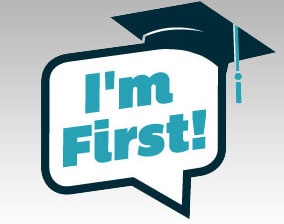By Laurel Kennedy
Vice President for Student Development
One of my strong memories of the first Denison class I ever taught, in 1988, was that when I entered class on the first day, nearly everyone looked the same. We were a very homogeneous campus.
Today, Denison has become a very diverse place. More accurately, it’s a pluralistic place. Students bring many racial, ethnic and religious backgrounds to campus; they represent the spectrum of socio-economic status, as well as the spectrums of gender identity and sexual orientation. They come from all kinds of families and communities that represent the breadth of not just American society in 2013, but the world.
Last week’s DCGA forum in the Roost was striking from this historical perspective. While we continue to struggle with how to move from representational diversity to experiential diversity—from numbers to a lived engagement—it was heartening to hear students state as fact that Denison is a diverse campus.
It was also inspiring to see students take initiative to get ahead of problems and seek solution through dialogue, rather than waiting for someone else to intercede.
The world beyond the Hill is marked by diversity, and our students’ ability to make positive change in that world rests on their ability to work with people different from themselves. As we become a more pluralistic campus, Denison becomes a great place to acquire and practice that skill.
But this isn’t easy work, as the forum also revealed. Enrolling a diverse student body is much easier than creating an environment in which diversity is celebrated and engaged, where the needs of historically under-represented students are understood and met, and where the prospects for success of all students are nurtured.
Some of this falls squarely to administrators like myself. I am very conscious, for example, that about 15% of Denison students are in the first generation of their families to attend college. That’s a large percentage, and we have obligations to support these students and their distinctive needs.
For example, for a number of reasons—the high schools they come from, the fact that their families may offer only limited help in navigating the unfamiliarity of college life—first-generation students often come to college with more anxiety about their academic abilities than others.
Whether warranted or not, they are more likely to fear academic struggle, and those fears can creep into all kinds of decisions: whether to approach a professor for help, to take on a challenging major or to apply to be a Summer Scholar. We need to help develop both skills and confidence.
First-generation students also anticipate different experiences while in college. They expect to have jobs, for example, since they are three times as likely as others to have major concerns about their ability to finance their education. Just over a quarter of first-generation students receive no financial support from their families—a situation unimaginable for most of our students. We have to make planning clearer for students who negotiate their finances alone, and eliminate hidden costs, like course materials not covered by book grants.
Other challenges are more subtle. When my own daughter would panic over a paper or exam, she could call me for not just encouragement, but also for help. We could review the structure of her paper, the strength of her argument, and the study strategies she was using. I could help because I was once a college student myself; I’m familiar with the rigors and routines of college.
First-generation students often have to go it alone in ways the rest of us overlook.
But first-generation students, whether from rural farming communities, small towns or big cities, bring cultural knowledge and experience to the campus that enhances our collective experience.
They also bring high aspirations; they and their families have often invested not just resources but lots of hope in Denison. And they’re right to do so, because while first-generation students nationally have a four-year graduation rate of about 27%, at Denison it is 72%.
So we are asking questions about the first-generation experience. We’ve conducted a series of focus groups about “wellbeing” in academics, social and community life, finances, and health.
We are using what students told us to refine programs and supports. As we talk about everything from social culture to advising to career preparation, we are mindful of the experiences of our culturally diverse student body.
But our collective success ultimately rests on the capacity of the full campus community to acknowledge how different college experiences may be from one student to the next. If we can resist assumptions about how others experience their classes, their leisure time, or their social life, we’ll begin to take that step from numbers to engagement.
If we can be patient with each other, but also recognize the opportunity that we have to learn about each other, and about ourselves as we engage with difference, we will be more ready to bring those possibilities to the world we make beyond the Hill.

